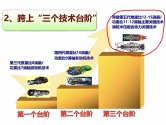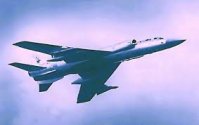It is literally a well-established rumour that an ACE WS-XX is in active development?Where did you get this information from? Or are you just speculating?
You are using an out of date browser. It may not display this or other websites correctly.
You should upgrade or use an alternative browser.
You should upgrade or use an alternative browser.
Chengdu next gen combat aircraft (?J-36) thread
- Thread starter Blitzo
- Start date
Is it? What are your sources for this?It is literally a well-established rumour that an ACE WS-XX is in active development?
Yes, that's why the J-36 has at least FHD (1920*1080) SWIR, MWIR and LWIR sensors imo.Recently, I have been researching supercruise and its impact on IR stealth. Some of you may have read this particularly pages 35-40, where Stillion argued that supercruising greatly compromise IR stealth and therefore supersonic speed should not be attempted. Specifically, table 4 claims thats supercruising at M1.6 increase the IR detection range by a factor of 2.9. If this is true and we assume the subsonic IR detection range to be 50km (PIRATE IRST claimed range), then a supercruising J-36 at M1.6 would be detected at 145km. This would imply that the supercruise capability of the J-36 are only relevant to rapidly moving from point A to B and are not well suited to air combat due to the IR stealth penalty. It would also imply that subsonic drones or even the B-21 are the ideal platform for future air combat, which is Stillion’s main point in the report.
View attachment 144869
Actually, Stillion made several mistakes that significantly overestimated the IR stealth penalty. First, he incorrectly claims that the Mach cone is visible in IR and increase the effective area of a supersonic object. In fact, Mach cones are invisible and the front projection area of supercruising aircrafts are the same as subsonic aircrafts. As a result, his calculations overestimate the IR emission of supercruising aircrafts by a factor of around 10.
Second, he assumes the shock cone temperature applies uniformly to the visible forward projected surface area. This is not true as the temperature decreases moving away from the tip of the nose. So the average aircraft is cooler than his calculated numbers, although the specific degree depends on the design.
Third, he failed to account for IR reflections from the sun and earth. An IRST detects the combined the IR radiation from the thermal radiation from the object itself as well as reflected light. How signifiant are the reflection from the earth? According to this paper (), quite a lot. In fact the earth irradiance overshadows the IR emission at between 20 to 40 C. This roughly corresponds to supercruising at M1.5.
View attachment 144864
Additionally, there are a number of strategies aircraft designers can use to suppress IR signatures. These include reducing surface emissivity, concentrating emissions in atmospheric absorption bands and directional emission to reflect IR radiations away from threat sensors (the last strategy is particularly viable for stealth aircrafts because the same geometry good for radar stealth is also good for IR stealth).
Interestingly enough, most of the paper I came across while researching this topic from Chinese authors, and they have unique tastes in making their graphical illustrations on how their research may be applied. Some examples below:
View attachment 144866
View attachment 144867
View attachment 144868
In conclusion, we should dispell the myth that supercruise is not compatible with IR stealth. The signature increase was overstated and there are many strategies to manage signature, with very active research coming out of China.
References:
It was from 2018/19 IIRC. My point is that China isn't exactly very new to VCE/ACE tech.This is probably an old article.back in 2014 zhuhai air show,they claim tech. Breakthrough in the development of VCE
Lol what?So you have an article that talks about vague developments in Chinese VCE from 2014 or "2018/19" and you went from that to "There's three engines, at least two of which will be adaptive cycle engines." Alot of missing steps along the way filled in entirely by sheer optimism is what I see here.
Three engines. The J-36 has three, confirmed. The previous speculation is that all three engines will be identical - WS-XX ACE or WS-15 early on if the former isn't ready yet. Now there's news about how the middle engine might be slightly different, hence "at least two of which will be ACEs."
It's not exactly news that a Chinese ACE is in the works - Orca literally said it, so did Ayi and others IIRC. There's research papers and patents about ACE systems also. If by "sheer optimism" or "missing steps" you mean "info that I'm not aware of" then I regret to inform you that it is in NO WAY my problem or my fault that you're ill-informed on Chinese Engine Development. My advice will be taking a stroll through a thread that's literally dedicated to this and catch yourself up.
Pipe down and sit down.
Oh and mind you, the image is from 2018.
ACE is under development at least since mid 2010's decade.. and there are tons of research paper published in different science journals across mainland. i can literally post 20-30 articles here.What I'm saying is that a Chinese ACE may be in the works, but you have not demonstrated its progress since that one single article, or whether it will be ready in time for the J-36 or the J-50.
but you want evidence ?? fine
------------------------
Year 2018
for the first time in China, the whole machine verification of key technologies unique to variable cycle was completed, the key technology system of adaptive engines was constructed, and a major breakthrough in the independent research and development of aviation engine technology was achieved. AECC had completed the testing of the technical verification machine of the variable cycle engine in 2018.
------------------------
Year 2022
Liu Daxiang, member of China academy of engineering said during the ''2022 keynote report of China aviation industry conference''
next generation low bypass ratio engine (with Thrust to weight ratio of 12-15) have achieved key technological breakthrough in materials..

you know. who is Liu Daxiang ?? he is the father of China's turbofan Engine industry. there is nothing above his words when it comes to Aero engine in mainland.
there are more information.. but this is enough for you.
Knock it off won’t you? Stay on topic.
I would take it even further back in the cold war, think Tu-128. Large fighter for engaging high value enablers(tankers, AWACs) at max possible range.They say that the J-36 is more similar to the F-14 Tornado ADV than to the F-22, describing it as a sort of large patrol fighter designed for use over the sea.
Much western discussion on J-36 has, it seems to me, been trying to figure it out through a USAF doctrinal lens.
Great thread, lots of good insights.


